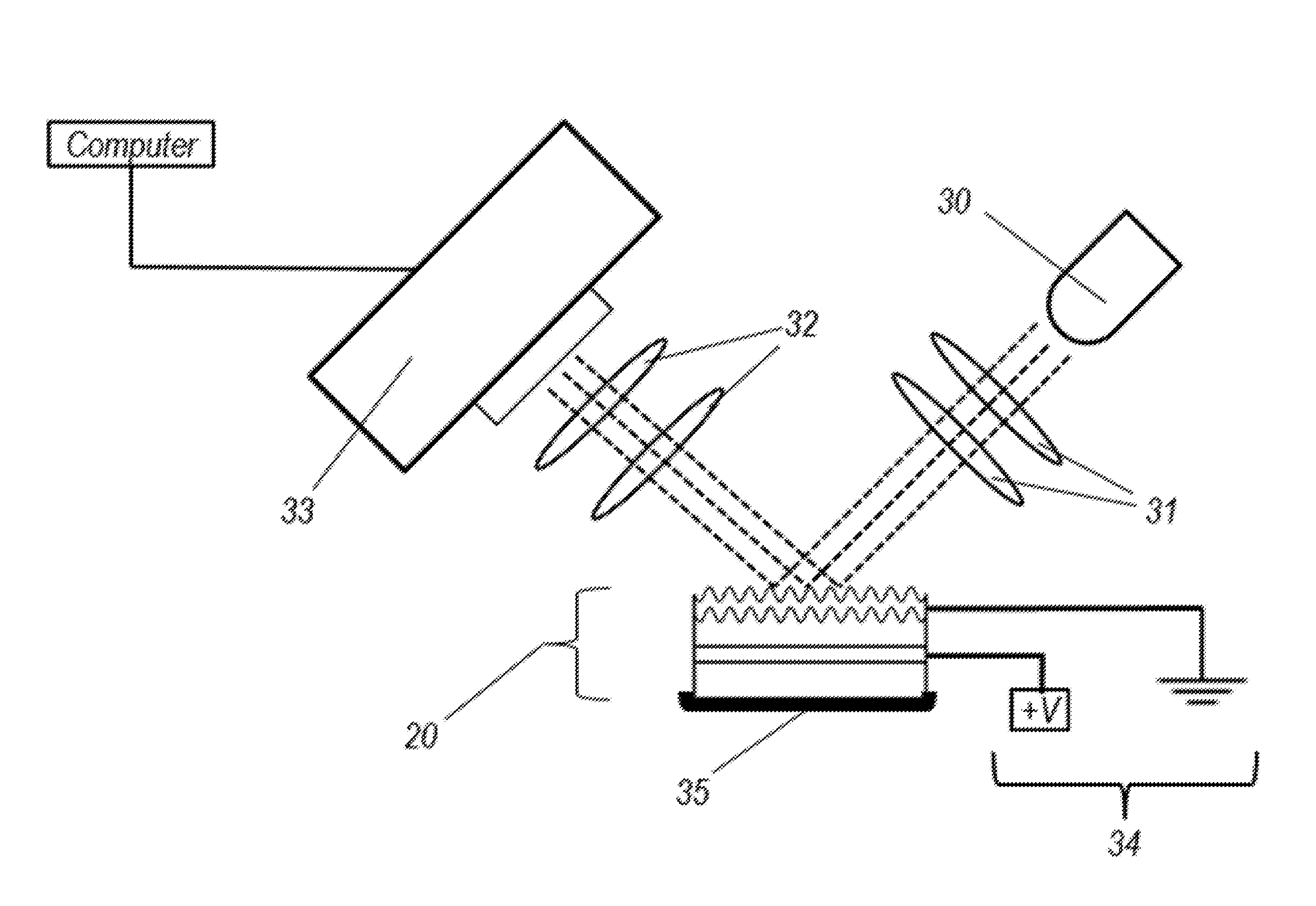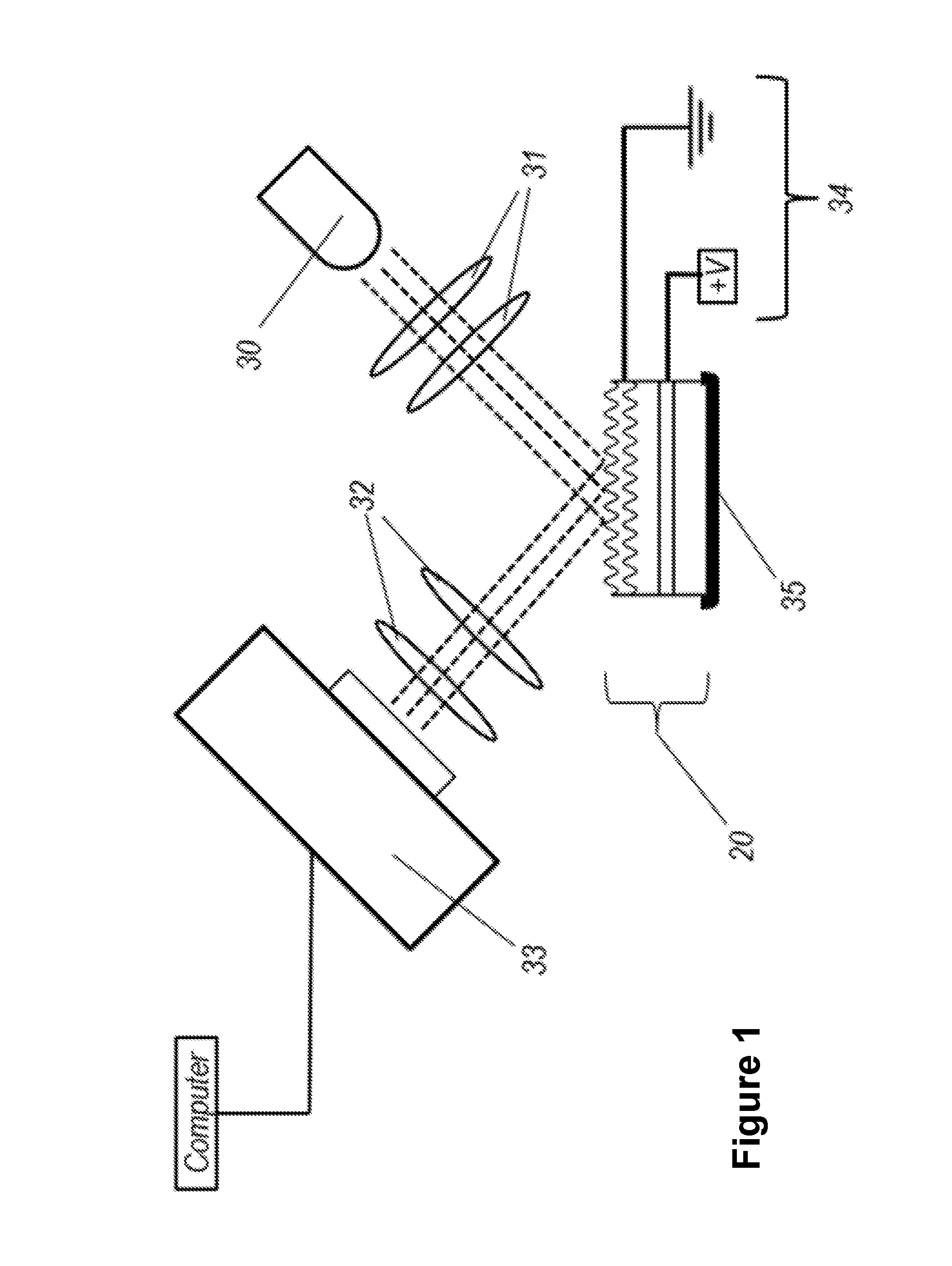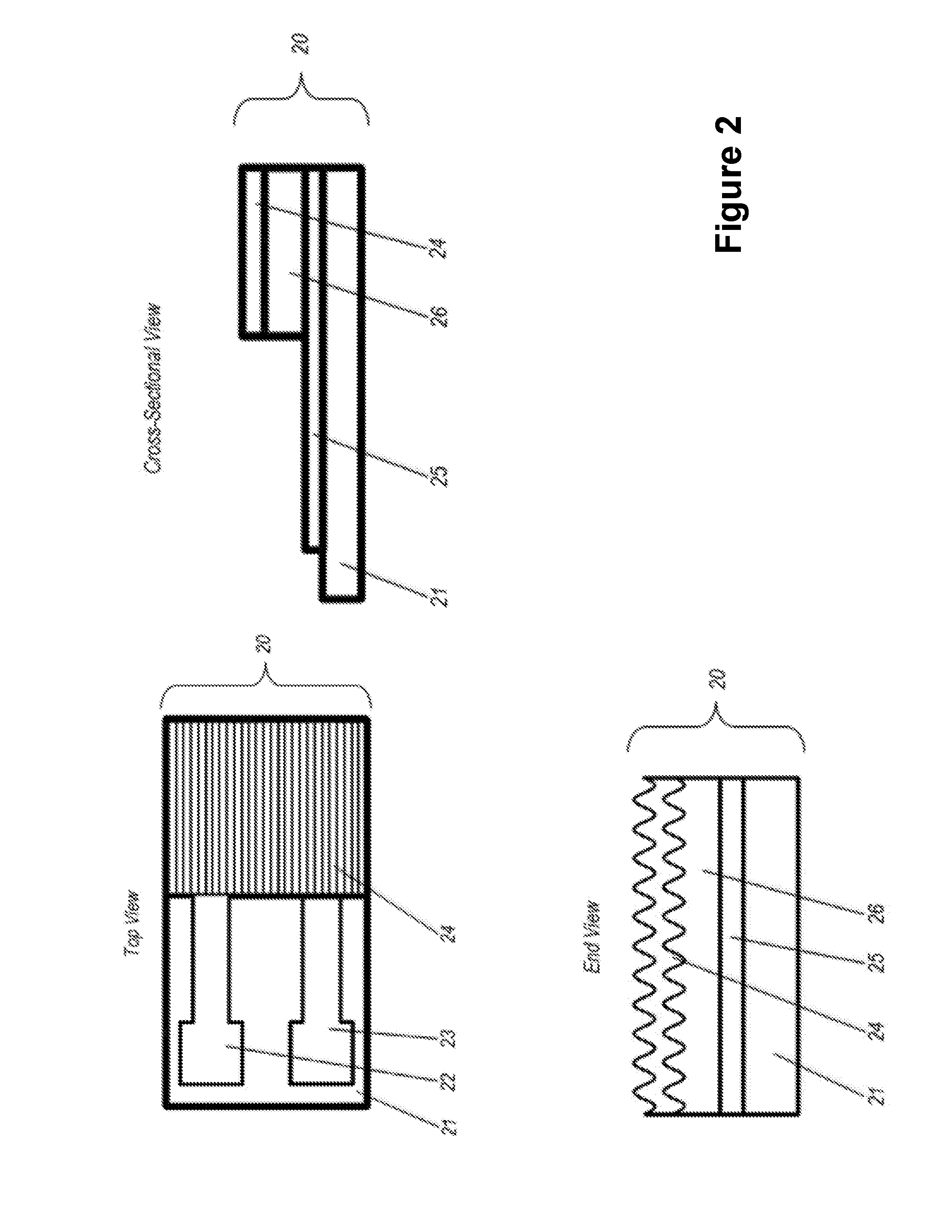Electro-Optic Grating-Coupled Surface Plasmon Resonance (EOSPR)
a technology of plasmon resonance and optical grating, which is applied in the field of electrooptic gratingcoupled surface plasmon resonance (eospr), can solve the problems of low sensitivity of classic approaches to limitation of the application of this technology to environmental and clinical samples, and low sensitivity of spr as compared to labeled techniques like elisa, etc., to achiev
- Summary
- Abstract
- Description
- Claims
- Application Information
AI Technical Summary
Benefits of technology
Problems solved by technology
Method used
Image
Examples
Embodiment Construction
[0019]As used herein, the term “electro-optic polymer” or “EO polymer” refers to polymers or other materials whose dielectric constant varies as a function of applied voltage. SEO100 from Soluxra, LLC of Seattle, Wash.is an example of an electro-optic polymer potentially compatible with the disclosed embodiments. The acronym GCSPR stands for Grating-Coupled Surface Plasmon Resonance, and EOSPR stands for Electro-Optic grating-coupled Surface Plasmon Resonance. SPCE stands for Surface Plasmon Coupled Emission. The EOSPR sensor surface is alternatively called the “chip,” the “sensor chip,” or the “EOSPR chip,” and will support an electro-optic grating-coupled approach to both SPR and SPCE.
[0020]An EOSPR sensor chip and complementary detection schema providing surface plasmon resonance analysis with or without concomitant SPCE measurements are described below.
[0021]In a dielectric-metal-dielectric arrangement, Equation 1 holds true, and Ksp therefore depends on the dielectric constant ...
PUM
 Login to View More
Login to View More Abstract
Description
Claims
Application Information
 Login to View More
Login to View More - Generate Ideas
- Intellectual Property
- Life Sciences
- Materials
- Tech Scout
- Unparalleled Data Quality
- Higher Quality Content
- 60% Fewer Hallucinations
Browse by: Latest US Patents, China's latest patents, Technical Efficacy Thesaurus, Application Domain, Technology Topic, Popular Technical Reports.
© 2025 PatSnap. All rights reserved.Legal|Privacy policy|Modern Slavery Act Transparency Statement|Sitemap|About US| Contact US: help@patsnap.com



